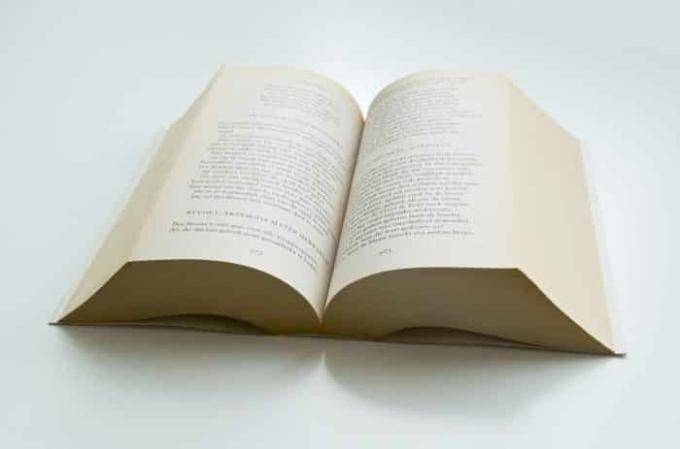Affixation Material: Definition, Types, Process, Examples
Loading...
In language morphology, there is a discussion about affixation or complex word formation. Indonesian is a language that is very identical with the addition of affixes, one example of affixation is the word "accountable" from the root word "responsibility".
Besides understanding, there are many other things that need to be learned to understand the concept of affixation. The following will be discussed in detail starting from the characteristics, types, formation processes to examples.
List of contents
Definition of Affixation

The study of word formation aka morphology is included in the study of linguistics. In morphology, there are 5 processes, one of which is affixation. The other four processes are reduplication, supply, internal change and empty modification.
The definition of affixation is a morphological process in the form of word formation to become more complex by adding affixes or affixes to the basic form. The root form refers to the root word, not the derivative word.
In other words, affixation is the process of adding affixes to words that can change their type and meaning. Affixation process is very often encountered in word formation in Indonesian.
The reason is that Indonesian is an agglutinated language, which is a category of language that often combines morphemes to form a word. Word formation in Indonesian attaches a lot of affixes, both at the beginning, middle and end of words.
Read: Standard and Non-Standard Words
Affixation Characteristics

One way to better understand affixation is to identify the characteristics they have. The following are the characteristics of affixation that you need to know:
- Including bound forms (bound morpheme) so that it cannot stand as an independent element;
- Includes direct elements;
- Including forms attached to other forms. This feature is related to the affixation feature as a bound morpheme or bound morpheme;
- Has no lexis;
- Grammatically meaningful;
- Influence on the change of word class based on the root word.
Types of Affixation

It is known that affixation is a bound form that can be attached to another form in the initial, middle or final position. Affixation is divided into several types which are explained below:
1. Prefix
The first type is called a prefix or prefix. As the name implies, this type of affix is added to the initial position of the root word or before the root word. Examples of prefix affixation in Indonesian are per-, ber-, ter-, se-, ke-, di- and pe-.
In addition, there are also absorption prefixes used in Indonesian such as maha-, anti-, pre-, all- and tuna-. The prefixation process is done by attaching affixes to the prefix of the root word.
2. Infix
The definition of infix is a type of affix that is positioned in the middle of a form. The infixation process is done by inserting an affix into the middle of the word so that this affix is also called an insertion.
Some examples of infixes that are often found to form Indonesian words are -el-, -in-, -er- and -em-.
3. Suffix
Furthermore, there is a suffix which is the opposite of a suffix. Definition of affixation Suffix is an affix that is added at the end of a form. There are 3 suffixes or suffixes in Indonesian, namely -i, -kan and -an.
4. Konfix
There are other types of affixes, namely confixes. This type of affix which is also known as circumfix or ambifix is an affix which is placed at the beginning and end of a certain basic form.
In Indonesian, the confixes that are often used are pe-an, ke-an, ber-an and role. When compared with the three previous affixes, confixes are not very familiar because generally only prefixes, insertions and suffixes are taught in schools.
5. Simulfik
It should be noted that simulfik is the most unique type of affix. Simulfik affixation is the process of adding affixes that can change the category or word class of the form through nasalization.
An easy example is the noun "coffee" which is translated into "coffee" so that it turns into a verb. However, there are still forms whose categories do not change even though they have syllables, such as "speeding" which is translated as "speeding" remains a verb.
6. Combination of Affixes or Combined Affixes
At first glance, the combination process of affix and confixation seems similar because they attach affixes to the beginning and end of certain basic forms. However, the two are not the same because the process of adding affixes to affix combinations occurs gradually.
Examples of affix combinations found in Indonesian include me-i, me-kan, mem-i, per-kan, per-kan, ter-kan, se-nya, ber-kan and pe-an.
Read: Reporter Verb
Affixation Process

It is important to know that the affixation process is a sequence of attaching affixes to a basic form so that it becomes a word that can change its category or remain.
As an illustration, the following is an explanation of the affixation process on the affix me- in Indonesian:
The process of adding the prefix me to basic words starting with the letter "s", namely:
Advertisement
me- + root word = prefix "s" will change to letter "ny"
me- + copy = copy
me- + broom = sweep
me- + greet = say hello
me- + ordered = ordered
The process of attaching prefixes to basic words starting with the letter "t", namely:
me- + root word = prefix "t" will change to letter "n"
me- + rope = rope
me- + dance = dance
me- + help = help
me- + write = write
me- + bend = bend
The process of adding the prefix me to basic words starting with the letter "k", namely:
me- + root word = prefix "k" will change to letter "ng"
me- + lock = lock
me- + peel = peel
me- + brackets = bracket
me- + study = study
me- + braid = braid
The process of attaching the prefix to a basic form starting with the letter "c", is:
me- + basic form = the prefix of the letter that was "c" will not change alias still begins with "c"
me- + search = seek
me- + pinch = pinch
me- + wash = wash
me- + claw = claw
me- + try = try
The process of adding the prefix me- to the basic form that has the letter “p” prefixed, is as follows:
me- + basic form = prefix "p" will change to letter 'm"
me- + nail = nail
me- + borrow = borrow
me- + install = install
me- + hit = hit
me- + display = display
Read: Exemplum Text
Affixation Table
The following table contains a list of affixes or affixes to make learning easier and at the same time memorize the affixes in each type of affix:
| Prefix | Infix | Suffix | Konfix | Simulfik | Affix Combination | ||
|---|---|---|---|---|---|---|---|
| Original | Absorption | Original | Absorption | ||||
| to- | great- | -el- | -i | -man | pe-an | ng- | May |
| to | pre- | -in- | -right | -wati | the | ny- | me-kan |
| men- | non- | -em- | -an | -wan | role | make-i | |
| in- | tuna- | -er- | -ism | air | correct | ||
| pen- | inter- | -at | per-kan | ||||
| the most | self- | -in | right? | ||||
| as- | anti- | -i | its | ||||
| per- | super- | -a | kan | ||||
| micro- | pe-an | ||||||
| auto- | |||||||
| bi- |
Affixation Example

In order to deepen the material on affixation, especially in Indonesian, here are some examples that are important to observe:
1. Infix Example
-in- in “performance”, -em- in “shaking” and -er- in veil.
2. Suffix Example
-kan in “open”, -i in “shoot” and –an in “punishment.
3. Confix Example
- ke-an in “misbehavior;
- roles in “urban” “agriculture” “trade” “friendship”, roles in “rural” “mountain”;
- slowly in "lessons".
In Indonesian, affixation is a very productive process that occurs because Indonesian is an agglutinating language. At least, there are 6 types of affixes encountered, namely prefixes, infixes, suffixes, confixes, simulfixes and combined affixes.
X CLOSE
Advertisements
ADVERTISEMENT
X CLOSE
